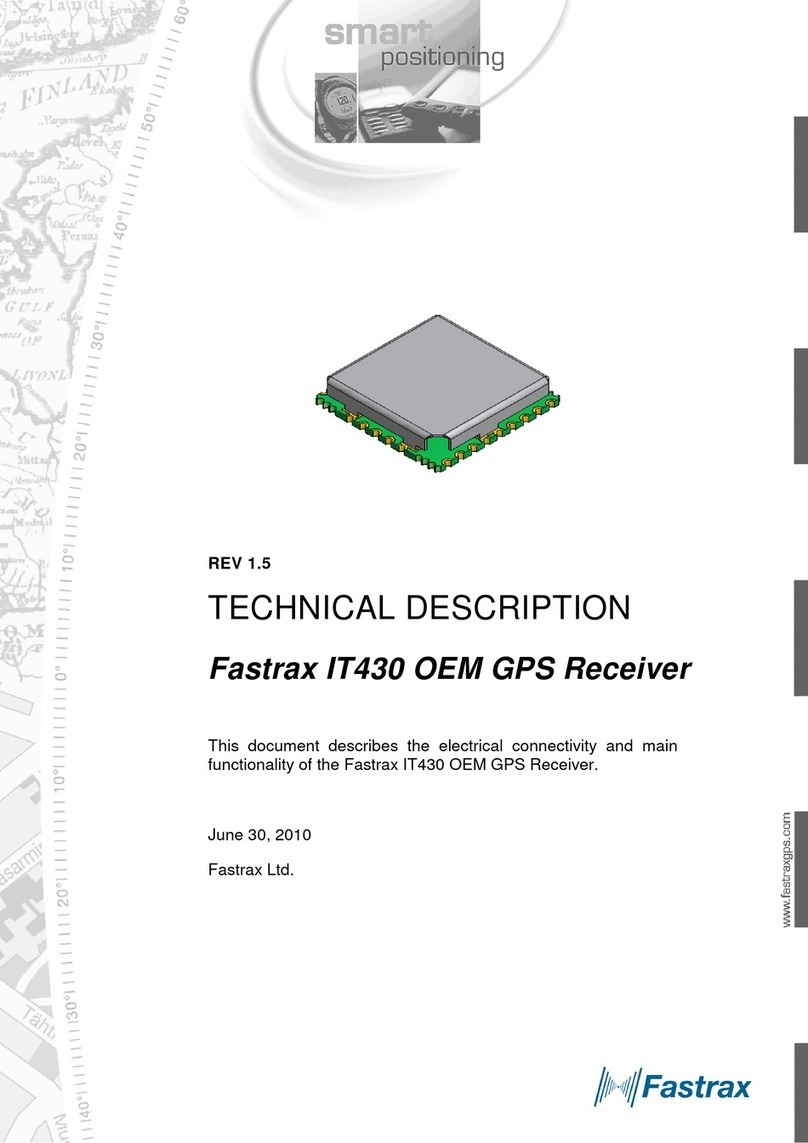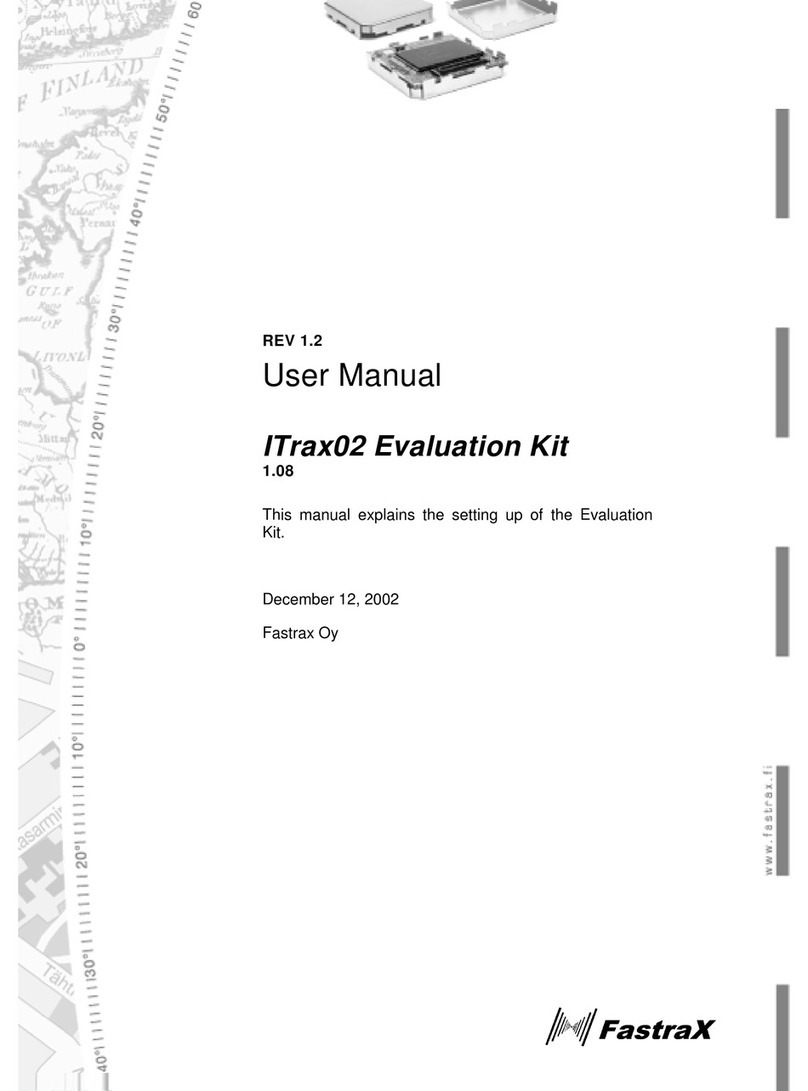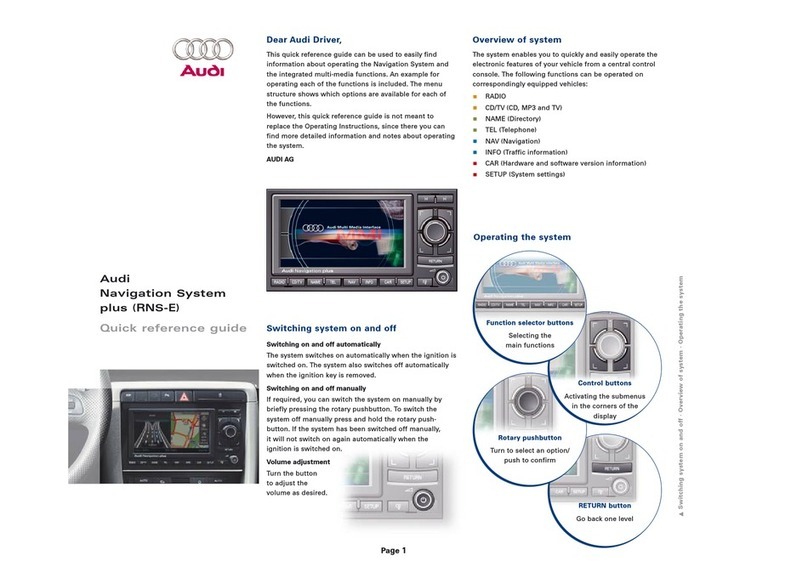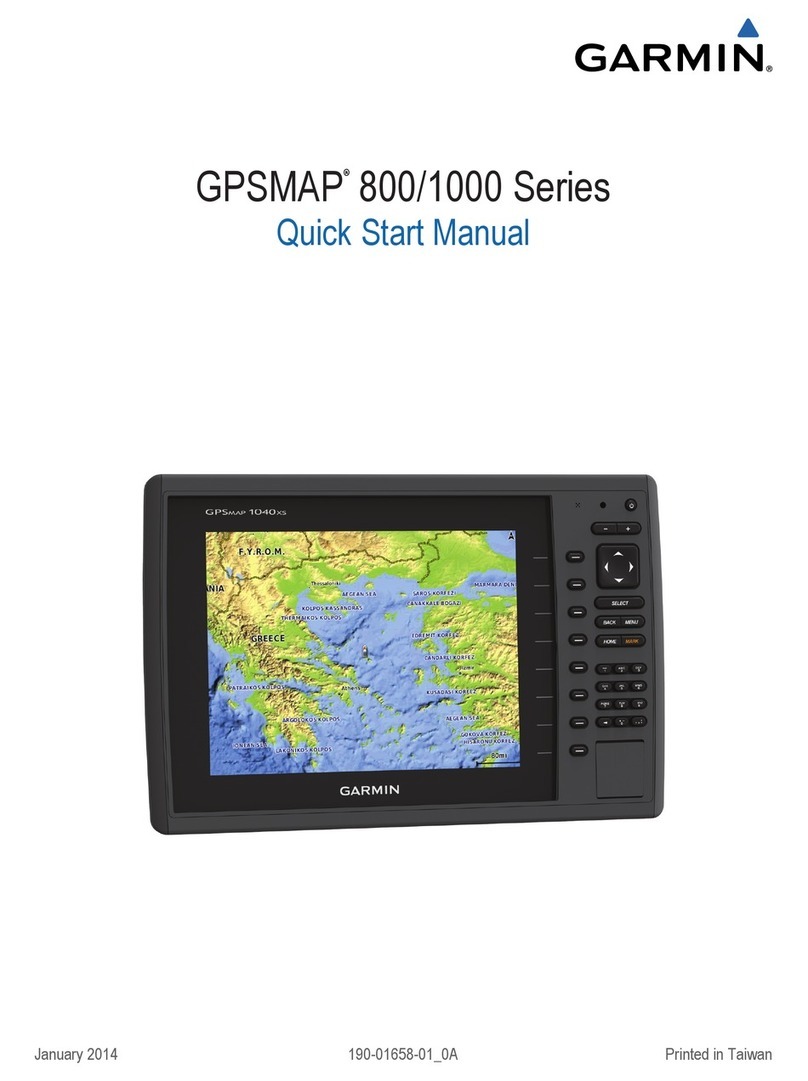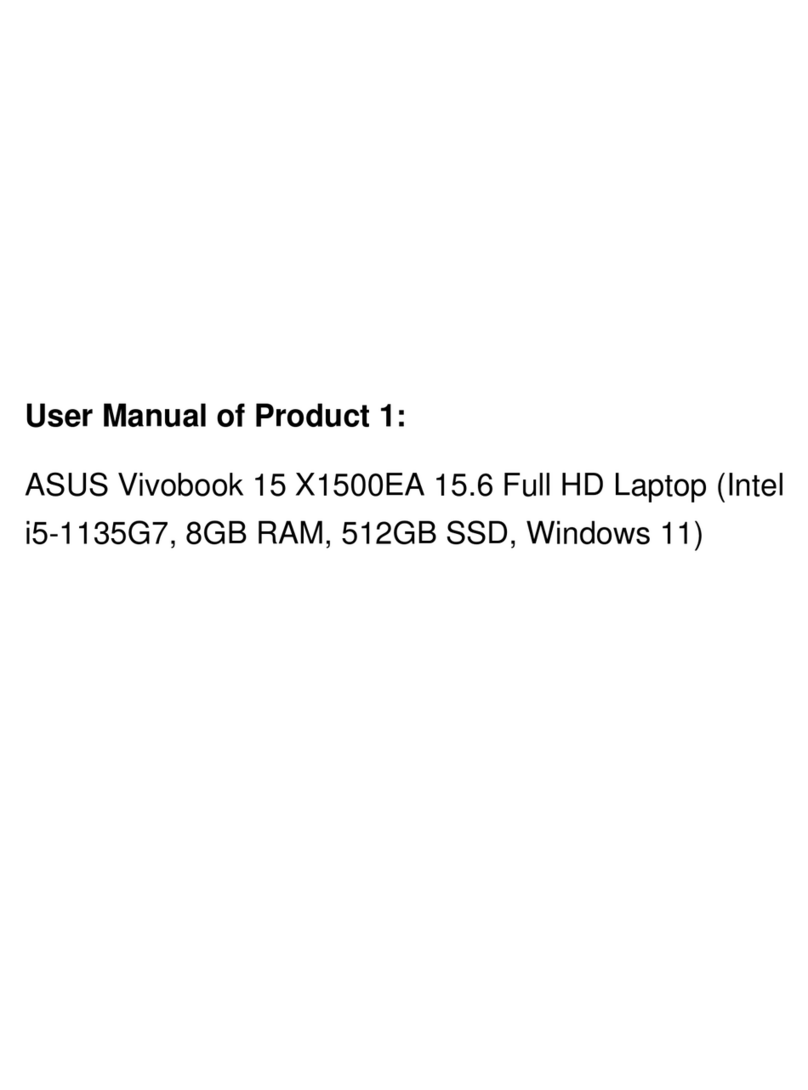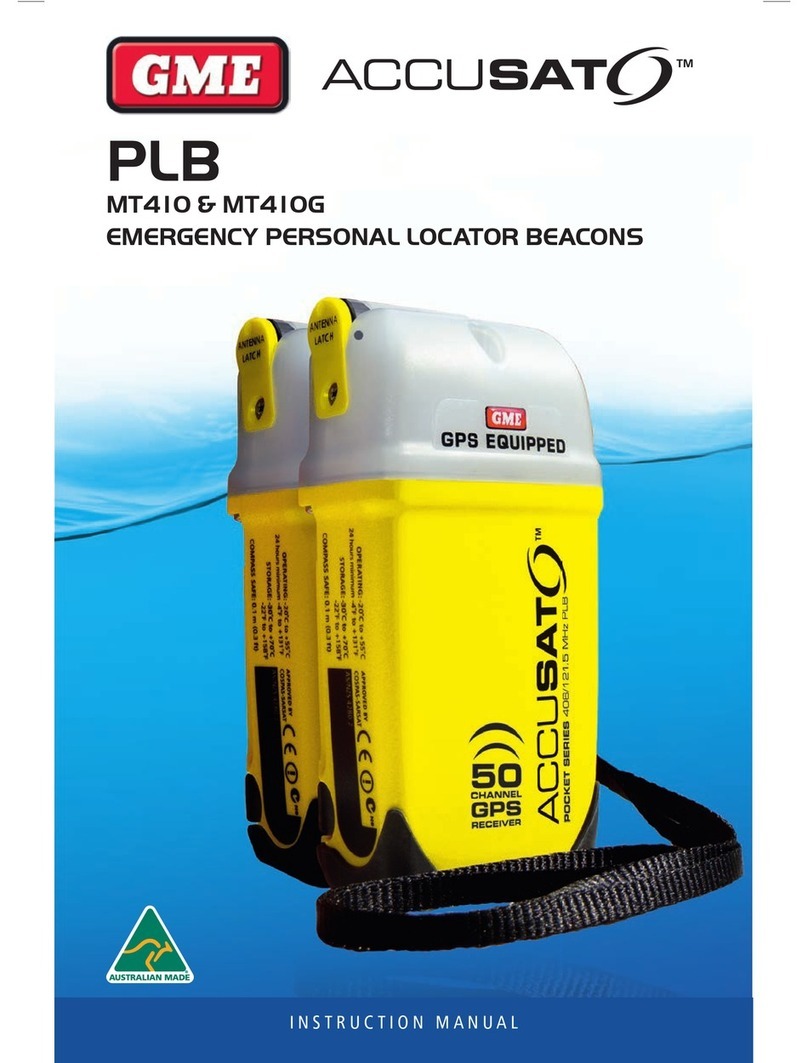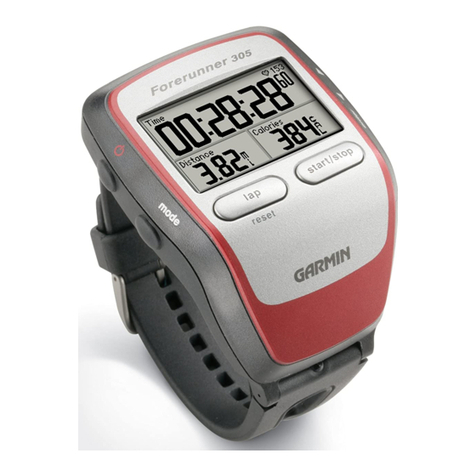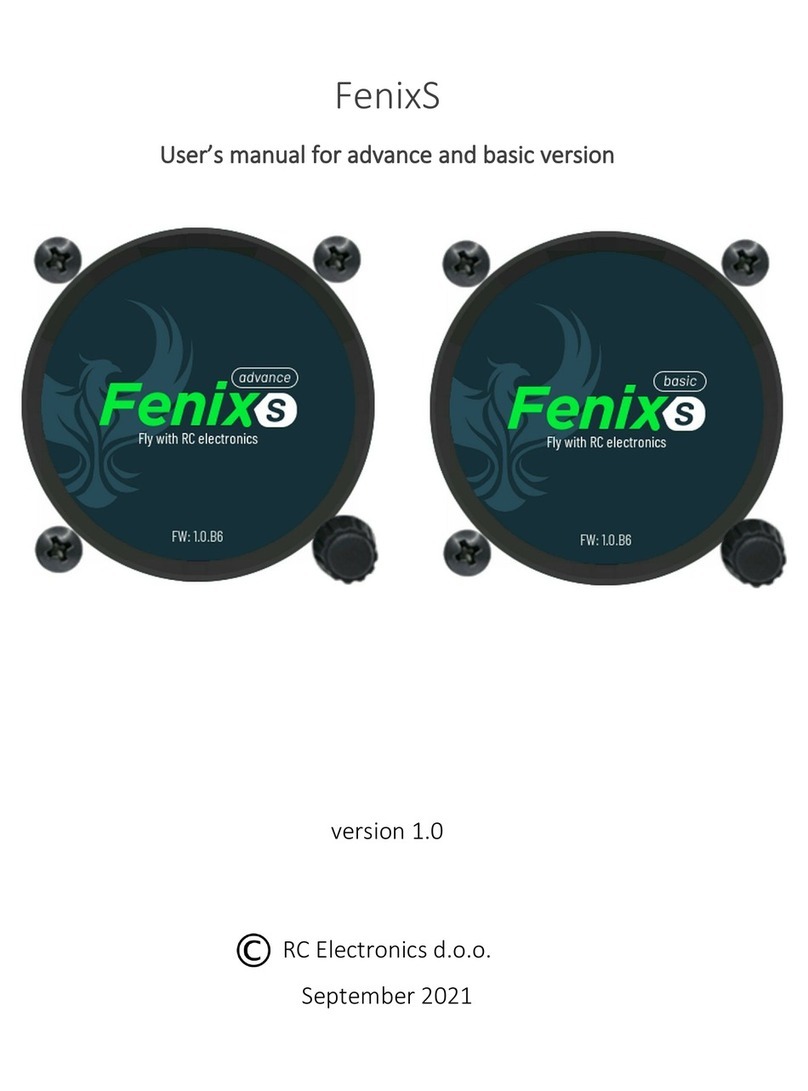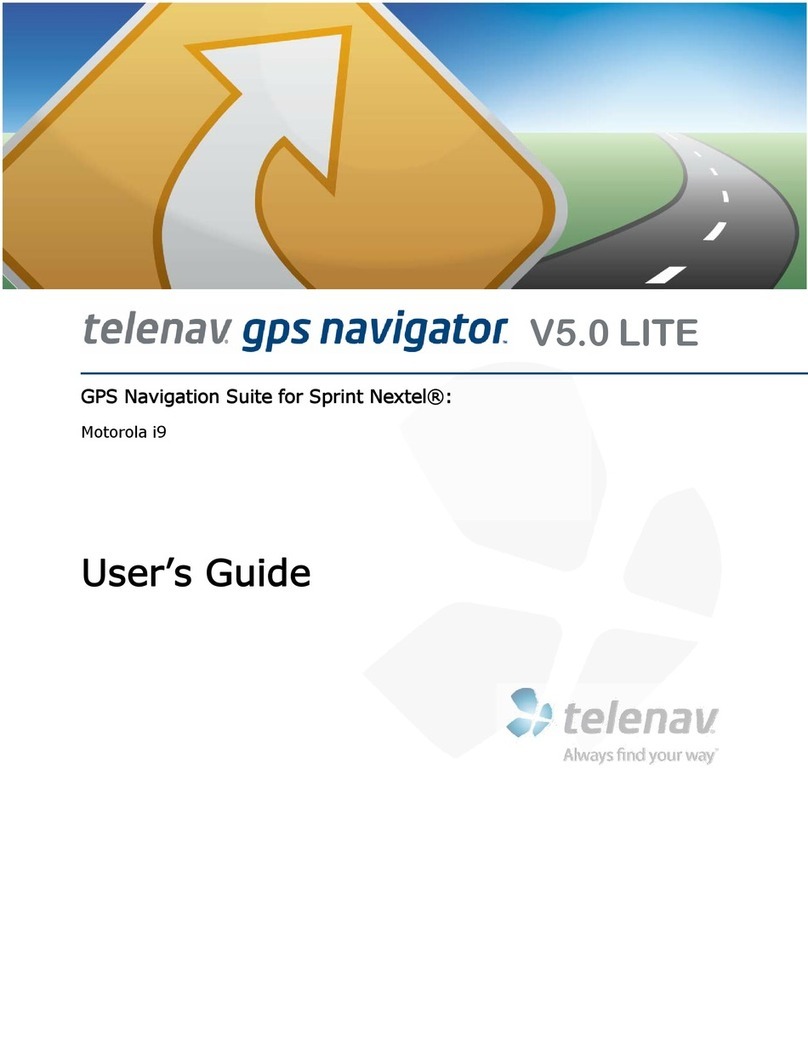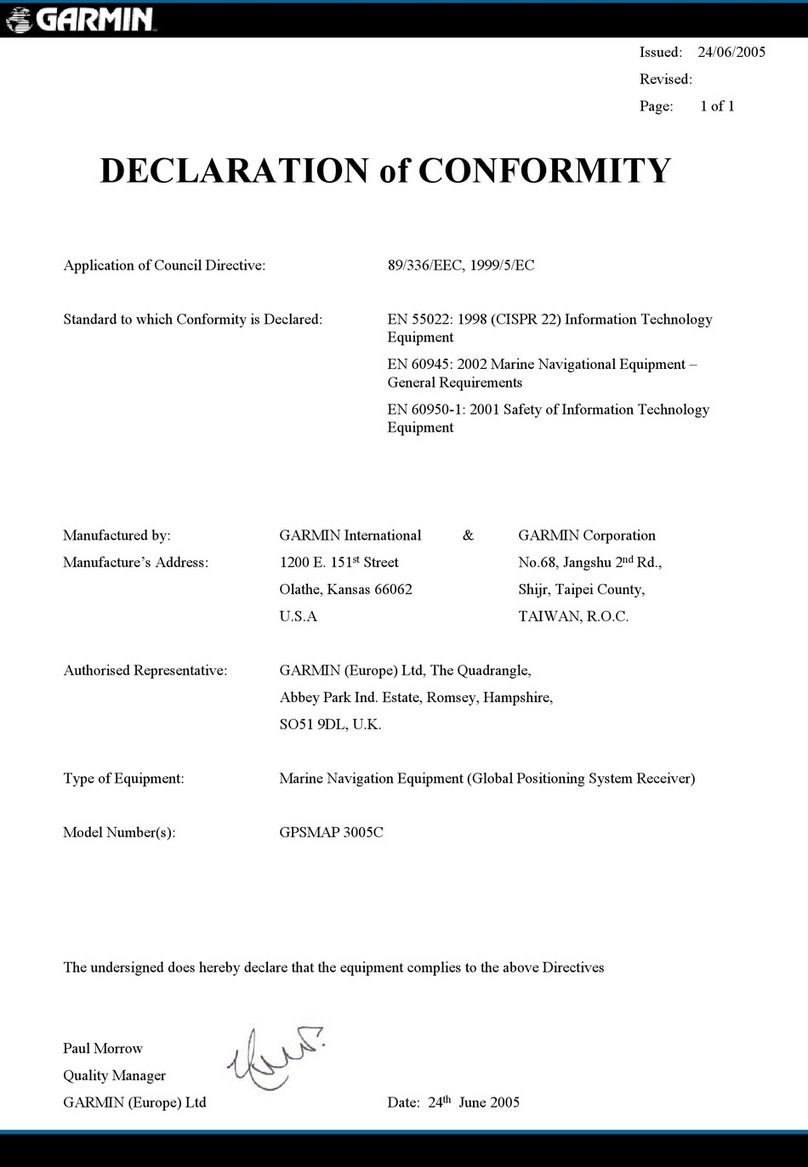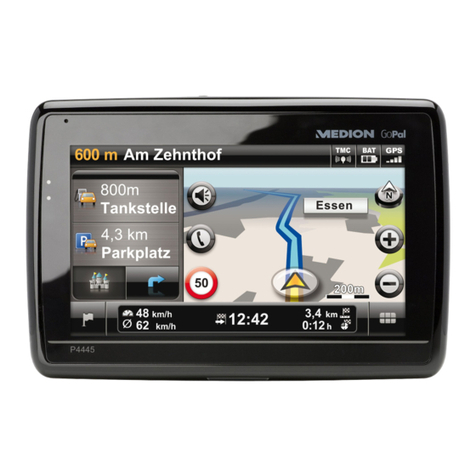Fastrax IT321 Parts list manual

REV 1.2
TECHNICAL DESCRIPTION
Fastrax IT321 OEM GPS
Receiver
This document describes the electrical connectivity and
main functionality of the Fastrax IT321 OEM GPS
Receiver.
November 19, 2007
Fastrax Ltd.

2007-11-19
Page 2 of 35
IT321_Tech_doc_12
TRADEMARKS
Fastrax® is trademark of Fastrax Ltd.
SiRF®, SiRFStar TM, TricklePowerTM, Push-to-FixTM, SiRFDriveTM are registered
trademark and trademarks of SiRF Technology, Inc.
All other trademarks are trademarks or registered trademarks of their respective
holders.

2007-11-19
Page 3 of 35
IT321_Tech_doc_12
CHANGE LOG
Rev. Notes Date
1.0 Initial documentation 2007-08-24
1.1 Module name change to IT321, abs. max power
dissipation 300mW, oper. temp. range -30C…
+85C, GPIO6 & 13 added to HW rev. B, added
VDD ripple specification, added ON_OFF tim-
ing, removed solder profile picture, added tape
and reel spec, changed Application Board
documents to rev C.
2007-10-11
1.2 GPIO13 changed to GPIO2 (IT321 PCB rev. C).
Updated protocol configuration Table 3.
2007-11-19

2007-11-19
Page 4 of 35
IT321_Tech_doc_12
CONTENTS
1. GENERAL DESCRIPTION .............................................................................. 7
1.1 Block diagram ...................................................................................... 8
1.2 Frequency Plan .................................................................................... 8
2. SPECIFICATIONS........................................................................................... 9
2.1 General ................................................................................................. 9
2.2 Absolute maximum ratings................................................................ 10
3. OPERATION ................................................................................................. 11
3.1 Operating modes................................................................................ 11
3.2 Normal mode ...................................................................................... 11
3.2.1 Output configuration ................................................................ 11
3.2.2 Power management system modes ......................................... 12
3.3 Hibernate mode .................................................................................. 13
3.4 Programming mode............................................................................ 13
3.5 Procedure for re-programming the flash firmware .......................... 14
4. CONNECTIVITY ............................................................................................ 16
4.1 Connection assignments................................................................... 16
4.2 Power supply...................................................................................... 18
4.3 Configuration select: GPIO 6 & 2 ...................................................... 18
4.4 Boot Control inputs ........................................................................... 18
4.5 ON_OFF control input........................................................................ 19
4.6 Antenna input..................................................................................... 20
4.6.1 Active GPS antenna................................................................. 21
4.7 UART................................................................................................... 21
4.8 PPS ..................................................................................................... 21
4.9 ELCK ................................................................................................... 21
4.9.1 GPIO1 Valid fix indicator.......................................................... 22
4.9.2 TSYNC/GPIO8......................................................................... 22
4.10 Mechanical dimensions and contact numbering.............................. 22
4.11 Suggested pad layout and pin out .................................................... 23
5. MANUFACTURING ....................................................................................... 24
5.1 Assembly ............................................................................................ 24
5.2 Suggested Reflow soldering profile.................................................. 24
5.3 Moisture sensitivity............................................................................ 24

2007-11-19
Page 5 of 35
IT321_Tech_doc_12
5.4 Tape and reel...................................................................................... 24
6. REFERENCE DESIGN .................................................................................. 26
6.1 Reference circuit diagram ................................................................. 26
6.2 PCB layout issues.............................................................................. 27
7. IT321 APPLICATION BOARD....................................................................... 29
7.1 Card Terminal I/O-connector ............................................................. 29
7.2 Bill of materials, PCB rev C ............................................................... 31
7.3 Circuit drawing, rev C ........................................................................ 32
7.4 Assembly drawing, Top side, rev C .................................................. 33
7.5 Artwork, layer 1 (Top), rev C ............................................................. 33
7.6 Artwork, layer 2, rev C ....................................................................... 34
7.7 Artwork, layer 3, rev C ....................................................................... 34
7.8 Artwork, layer 4 (Bottom), rev C........................................................ 35

2007-11-19
Page 6 of 35
IT321_Tech_doc_12
COMPLEMENTARY READING
The following Fastrax reference documents are complementary
reading for this document. All operating and firmware related
documentation is also available at www.fastrax.fi
Ref. # File name Document name
The following SiRF reference documents are also complementary
reading for this document. All operating and firmware related
documentation is available from SiRF Technology, Inc.
Ref. # File name Document name
I GSC3LTProductInsert.pdf GSC3LT Brochure
II NMEA Reference Man-
ual.pdf
NMEA Reference Manual
III SiRF Binary Protocol Ref-
erence Manual.pdf
SiRF Binary Protocol Ref-
erence Manual

2007-11-19
Page 7 of 35
IT321_Tech_doc_12
1. GENERAL DESCRIPTION
The Fastrax IT321 is an OEM GPS receiver module, which provides
the SiRFstarIII receiver (ref I) functionality using the state of the art
SiRF GSC3LT chip. The module has tiny form factor 10.4x14.0mm,
height is 2.3mm nominal (2.6mm max). The Fastrax IT321 receiver
provides low power and very fast TTFF together with weak signal ac-
quisition and tracking capability to meet even the most stringent per-
formance expectations.
The module is available with two versions:
•SiRF ROM code version
•Early samples can be provided with embedded flash version
(4Mbit in GSC3LTf) for evaluation with GSWLT3 firmware.
The module provides complete signal processing from antenna input
to serial data output in either NMEA messages (ref II) or in SiRF bi-
nary protocol (ref III). The module requires a main power supply VDD,
which can be powered directly from a raw battery voltage. The Fas-
trax IT321 module interfaces to the customer’s application via one se-
rial port. Serial data and I/O signal levels are 1.8V or 1.2V CMOS
compatible.
The antenna input supports passive and active antennas and provides
also an internally generated antenna bias supply.
This document describes the electrical connectivity and main func-
tionality of the Fastrax IT321 OEM GPS Receiver module.

2007-11-19
Page 8 of 35
IT321_Tech_doc_12
1.1 Block diagram
RF BB
(flash)
SAW
LNA
GSC3LT
TCXO
RTC
+2.7V
CTRL_LNA
ANT
UART A
BOOT1&2
VDD
+2.7V
CTRL_TCXO
CTRL_TCXO
CTRL_LNA
ON_OFF
Figure 1 Block diagram
1.2 Frequency Plan
Clock frequencies generated internally at the Fastrax IT321 receiver:
•32768 Hz real time clock (RTC)
•16.369 MHz master clock (TCXO)
•1571.424 MHz local oscillator of the RF down-converter

2007-11-19
Page 9 of 35
IT321_Tech_doc_12
2. SPECIFICATIONS
2.1 General
Table 1 General Specifications
Receiver GPS L1 C/A-code, SPS
Chip set & Navigation sensitivity SiRF GSC3LT -159dBm
Channels 20 physical (12 in tracking, firmware limited)
Update rate 1 Hz default (fix rate configurable with SiRF
TricklePower)
Supply voltage, VDD +3.25V…+5.5 V (can be raw battery supply)
Supply voltage, VDD ripple max 300mVpp @ f<10kHz & 3mVpp @ f>100kHz
Power consumption, VDD 90 mW typical @ 3.3V (without Antenna bias)
Power consumption, VDD 65 uW typical @ 3.3V (during Hibernate state)
Antenna net gain range 0…+25dB (+10… +20dB suggested for optimum
performance)
Antenna bias voltage +2.7V (+0.3/-0.5V)
Antenna bias current 15 mA max
Storage temperature -40ºC…+85ºC
Operating temperature (note 1) -30ºC…+85ºC
Serial port configuration NMEA (configurable to SiRF binary)
Serial data format 8 bits, no parity, 1 stop bit
Serial data speed 4800 baud (configurable)
I/O signal levels, VCC = 1.8V or
1.2V
CMOS compatible: low state 0…0.25xVCC; high
state 0.75…1.0xVCC
I/O sink/source capability +/- 2 mA max.
PPS output +/-1us accuracy

2007-11-19
Page 10 of 35
IT321_Tech_doc_12
Note 1: Operation in the storage temperature range –40°C… +85°C is
allowed but Time-to-First-Fix and other GPS performance may be de-
graded.
2.2 Absolute maximum ratings
Table 2 Absolute maximum ratings
Item Min Max unit
Operating and storage temperature -40 +85 ºC
Power dissipation - 300 mW
Supply voltage, VDD -0.3 +5.5 V
Input voltage on any input connection,
VCC = 1.2V or 1.8V
-0.3 VCC+0.3V V
RF input level - +15 dBm

2007-11-19
Page 11 of 35
IT321_Tech_doc_12
3. OPERATION
3.1 Operating modes
After power up the IT321 module (with Flash version) boots from the
internal ROM or from flash memory depending on the BOOT1 and
BOOT2 control inputs (see Table 4).
With ROM code version the BOOT1 & 2 inputs can be left uncon-
nected but the inputs GPIO6 & 2 determine baud rate and protocol
selection (see Table 3). Modes of operation:
•Normal mode (Navigation)
oPower management system modes
•Hibernate mode
•Programming mode
3.2 Normal mode
The IT321 receiver will start navigation automatically after power up
using all (if any) aiding information on GPS time, satellite ephemeris
and Last Known Good (LKG) position information provided by the
non-volatile back up block (RTC & RAM). The power consumption will
vary depending on the amount of satellite acquisitions and number of
satellites in track. This mode is also referenced as Full Power or
Navigation state.
Navigation is available and any configuration settings are valid as
long as the VDD power supply is active. When the VDD is powered
off, settings are reset to factory configuration and receiver performs a
cold start on next power up.
3.2.1 Output configuration
With ROM code version user can select the data output configuration
by setting the GPIO 6 and 2, which are read at power up. Configura-
tion is selected by setting GPIO 6 and 13 to low or high state accord-
ing to the following table.

2007-11-19
Page 12 of 35
IT321_Tech_doc_12
Table 3 Output configurations
Configuration 1 2 3
GPIO6 input low high low
GPIO2 input low low high
Protocol NMEA 3.01 SiRF binary NMEA 3.01
Baud rate 4800,n,8,1 57600,n,8,1 57600,n,8,1
NMEA mes-
sages @1s
GGA, GSA,
GSV@5s, RMC, VTG
- GGA, GSA, GSV,
RMC, VTG, (EE)
Binary mes-
sages @1s
2, 4, 9, 13, 18, 41,
(EE)
GPIO1 output,
no navigation
high high high
GPIO1 output,
navigation
100ms high @ 1Hz 100ms high @
1Hz
100ms high @ 1Hz
DGPS/SBAS Disabled Enabled Enabled
Static naviga-
tion filter
Disabled Disabled Enabled
Track smooth-
ing filter
Enabled Enabled Enabled
Internal DR Disabled Disabled Enabled
Extended
Ephemeris
Disabled Enabled Enabled
3.2.2 Power management system modes
The IT321 module supports also SiRF operating modes for reduced
average power consumption (ref III) like Adaptive TricklePowerTM and
Push-to-FixTM modes:
1. Adaptive TricklePower: In this mode the receiver stays at Full
Power for 200… 900ms and provides a valid fix. Between fixes
with 1… 10 sec interval the receiver stays in a low power mode
to reduce power drain. TricklePower mode is configurable with

2007-11-19
Page 13 of 35
IT321_Tech_doc_12
SiRF binary protocol message ID151 (ref III). The receiver
stays once in while in Full Power automatically to collect new
ephemeris and almanac data from rising satellites.
2. Push-to-Fix: In this mode the receiver is configured to wake up
periodically, typically every 1800 sec, to collect new ephemeris
data from rising satellites. Rest of the time the receiver stays in
a low power mode. The host wakes up the receiver by ON_OFF
control input interrupt (pulse low-high-low >62us) after which
the receiver performs Hot start and a valid fix is available within
few seconds. This mode is configurable with SiRF binary proto-
col message ID151 (ref III).
Note that position accuracy is somewhat degraded in power man-
agement modes when compared to full power operation.
3.3 Hibernate mode
Hibernate mode means a low quiescent power state where only the
internal non-volatile RTC and RAM block is powered on. The main
supply input VDD is kept active all the time, even during Hibernate
mode. The Hibernate mode is entered by host interrupt at ON_OFF
control input (pulse low-high-low >62us).
Other internal blocks like digital baseband and I/O block are internally
powered off, thus output levels are at low state and any inputs, ex-
cluding ON_OFF input, like UART RXA should be disconnected or
forced to low state.
The receiver wakes up from Hibernate mode and returns to Normal
mode after next ON_OFF interrupt (pulse low-high-low >62us) allow-
ing fast TTFF with either Hot or Warm start.
3.4 Programming mode
Programming mode is only available with the flash version (GSC3LTf)
with the embedded 4Mbit flash memory. The ROM code version does
not support programming.
Programming via HW-booting mode is utilized by forcing the BOOT1
and BOOT2 control inputs for high state (Flash programming, follow-
ing table) during power up. Now the GPS module boots for the UART
and waits for the boot loader commands from the host (an application
running on the host, SiRFFlash). It is suggested that all applications
using embedded flash version should support the HW-booting by ac-

2007-11-19
Page 14 of 35
IT321_Tech_doc_12
cess to UART (TXA & RXA), BOOT1 and BOOT2 input signals and
VDD On/Off control.
Note that during the flash update process the serial data speed is
changed and thus the serial line connection should be a direct line to
the host without any transferring utilities that may cause failure during
speed change.
Table 4 BOOT modes
BOOT mode BOOT2
(internal
pull up)
BOOT1
(internal
pull down)
Flash (Normal mode) 0 0
Reserved 0 1
Flash programming UART A 1 1
ROM (Normal mode) (Default) 1 0
3.5 Procedure for re-programming the flash firmware
1. Connect UART (RXA and TXA signals) to PC via RS232 converter.
2. Set the module to UART boot mode: Power up the module to Flash
programming mode according to Table 4. when using Fastrax
Evaluation kit power up the kit and toggle Prog/Reset switch to
Prog position.
3. Start SiRFFlash application on PC.
4. Browse for the flash *.s file.
5. Check the Communication setting from the SiRFFlash to meet
your PC serial port.
6. Press Execute at SiRFFlash. Now the flashing starts.
7. After flashing has finished, recover normal operation by toggling
power VDD off-on and setting boot mode to Flash mode according
to Table 4.

2007-11-19
Page 15 of 35
IT321_Tech_doc_12
Figure 2 SiRFFlash utility settings

2007-11-19
Page 16 of 35
IT321_Tech_doc_12
4. CONNECTIVITY
4.1 Connection assignments
The I/O connections are available as soldering pads on the bottom
side of the module. These pads are also used to attach the module on
the motherboard in application. All unconnected I/O should be left
open (floating) unless instructed to use pull external up or pull down.
Table 5 Connections
Contact Signal name I/O Alternative
signal name
Signal description
1 ANT I/O - Antenna signal input 50 ohm, An-
tenna bias voltage +2.7V output
2 GND - - Ground
3 GND - - Ground
4 GND - - Ground
5 GND - - Ground
6 GPIO6 I - Control input for protocol configura-
tion. VCC=1.8V. For default pull
low.
7 ON_OFF I - Interrupt toggle (pulse low-high-low
100ms) for switching between Hi-
bernate/Normal mode. VCC=1.2V.
Pull to low state with e.g. 10kohm if
not used.
8 GND - - Ground
9 VDD - - Power supply, can be raw battery
voltage. Note ripple voltage spec.
10 BOOT1 I - BOOT select 1. Can be left uncon-
nected with ROM version.
With flash version connect to
BOOT2 signal and pull low with
R<5kohm. Has internal pull down
resistor 100kohm. VCC=1.8V.

2007-11-19
Page 17 of 35
IT321_Tech_doc_12
11 GND - - Ground
12 TSYNC I/O GPIO8 Option for Timing pulse input in A-
GPS version. Pull low when not
used with e.g. 10kohm. VCC=1.8V.
13 GPIO2 I - Control input for protocol configura-
tion. VCC=1.8V. For default pull
low.
14 GND - - Ground
15 GPIO1 O - Valid fix indicator output. Can be
left unconnected. VCC=1.8V
16 ECLK I - Option for external clock input in A-
GPS version. Pull low state with
e.g. 10kohm if not used.
VCC=1.8V.
17 GND - - Ground
18 RXA I - UART A async. Input. Has internal
pull up resistor 100kohm.
VCC=1.8V.
19 TXA O - UART A async. Output. VCC=1.8V.
20 PPS O - 1PPS signal output. VCC=1.8V.
21 GND - - Ground
22 BOOT2 I - BOOT select 2. Can be left uncon-
nected with ROM version.
With flash version connect to
BOOT1 signal and pull low with
R<5kohm. Has internal pull up re-
sistor 100kohm. VCC=1.8V.
23 GND - - Ground
24 GND - - Ground
Contact Signal name I/O Alternative
signal name
Signal description

2007-11-19
Page 18 of 35
IT321_Tech_doc_12
4.2 Power supply
The IT321 module requires only one power supply VDD, which can be
supplied directly from a battery since the module has internal regula-
tors. Keep the supply active all the time in order to keep the non-
volatile RTC & RAM active for fastest possible TTFF.
Main power supply VDD current varies according to the processor
load and satellite acquisition. Typical VDD peak current is 45mA dur-
ing acquisition. Typical VDD current in low power Hibernate mode is
20uA.
The IT321 allows about 300mVpp ripple voltage at the supply VDD
below 10kHz frequency. The ripple voltage should be reduced further
at VDD supply below 3mVpp at 100kHz frequency or higher. E.g. if
the battery that provides the supply for VDD is connected to a
switched mode regulator operating at 100kHz, the resulting voltage
ripple shall be reduced below 3mVpp by a suitable by-pass capacitor
or by external low pass filter prior VDD supply input.
4.3 Configuration select: GPIO 6 & 2
The data output protocol configuration is defined using the GPIO 6
and 13 control inputs. After power up the value is read and the con-
figuration is processed according the Table 3 (in previous chapter).
The GPIO 6&2 inputs should be kept valid after power up for at least
500 ms to allow the internal power-on-reset delay to settle. I/O levels
are CMOS 1.8V compatible.
4.4 Boot Control inputs
The boot source is defined in the internal boot ROM sector by using
the BOOT1 and BOOT2 control inputs. After power up the value is
read and the boot is processed according the Table 4 (in previous
chapter).
The BOOT inputs should be kept valid after power up for at least 500
ms to allow the internal power-on-reset delay to settle. I/O levels are
CMOS 1.8V compatible.

2007-11-19
Page 19 of 35
IT321_Tech_doc_12
NOTE
With ROM code version the BOOT inputs
can left unconnected (floating) since internal
pull ups are configured to ROM mode as de-
fault.
NOTE
With embedded flash version the BOOT1
and BOOT2 input can be connected to the
same boot control source from host. Normal
operation requires external pull-down resis-
tors connected to the common input, e.g. 0
ohm… 4.7kohm.
4.5 ON_OFF control input
The ON_OFF control input can be used to control the receiver be-
tween Normal or Hibernate modes and also to generate interrupt in
Push-to-Fix operation.
The ON_OFF interrupt is generated by a low-high-low toggle, which
should be longer than 62us and less than 1s (suggestion is abt.
100ms pulse length). Input level is CMOS 1.2V compatible. Do not
generate ON_OFF interrupts less than 1 sec intervals. Especially take
care that any multiple switch bounce pulses are filtered out.
After power up the first ON_OFF interrupt sets the module to Hiber-
nate mode. Next ON_OFF interrupt wakes up the module for Normal
(Navigation) operation. Consequent ON_OFF interrupts switch the
operation mode between Hibernate and Normal modes.
During Hibernate mode internal I/O supply is internally powered off,
thus output levels are at low state and any inputs, excluding ON_OFF
input, like UART RXA should be disconnected or forced to low state.

2007-11-19
Page 20 of 35
IT321_Tech_doc_12
Figure 3 Suggested ON_OFF Hibernate control timing diagram.
NOTE
If not used, pull ON_OFF signal to low state
with e.g. 10kohm pull down resistor.
If used, note that the input is CMOS 1.2V
compatible. Use e.g. a resistive divider to
reduce input voltage to 1.2V when using
1.8V or 3.3V host control source.
Do not generate multiple ON_OFF interrupts
less than 1 sec intervals. Especially filter out
multiple pulses generated by a mechanical
switch bounce.
4.6 Antenna input
The module supports passive and active antennas. The antenna input
impedance is 50 ohms. During Normal (navigating) operation, the in-
put provides also a bias supply (+2.7V typ.). When the navigation is
stopped, the antenna bias is switched off automatically.
NOTE
Passive antennas with a short-circuit to
GND should be DC blocked externally with a
18pF…1nF serial capacitor.
Table of contents
Other Fastrax GPS manuals
